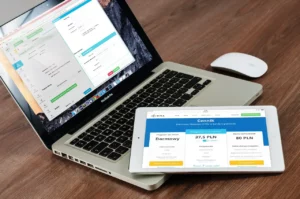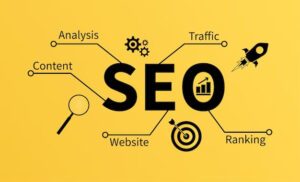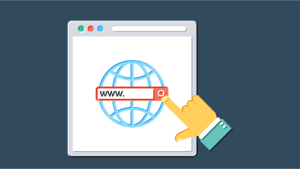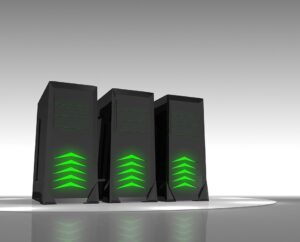Your website designer showed you a beautiful mockup. The colors pop, the layout flows, and everyone in the meeting nodded approvingly. Six months later, your conversion rate hasn’t budged. Sound familiar? Here’s the truth most designers won’t admit: pretty websites don’t sell—psychologically optimized websites do. The difference between a 2% and 10% conversion rate isn’t about aesthetics; it’s about understanding the invisible psychological triggers that compel visitors to take action. Today, we’re exposing the cognitive science behind websites that convert browsers into buyers, and why your designer’s portfolio might be sabotaging your sales.
The Lizard Brain Hijack: Why First Impressions Actually Last
Within 50 milliseconds—faster than you can blink—visitors have already judged your website. This isn’t conscious evaluation; it’s your visitor’s primitive brain making an instant fight-or-flight decision about whether to trust your site. This snap judgment, once formed, colors every subsequent interaction. Understanding this psychological reality transforms how we approach web design.
The amygdala, our brain’s alarm system, scans for threats before our rational mind even engages. Cluttered layouts, aggressive pop-ups, or confusing navigation trigger subtle anxiety responses that make visitors want to escape. Conversely, clean design with ample white space activates feelings of safety and control. This is why minimalist websites often outperform visually complex ones—they don’t trigger the brain’s threat detection systems.
Color psychology plays a crucial role in this instant assessment. While designers choose colors for aesthetic harmony, web design and development experts understand that color directly impacts emotion and behavior. Blue increases trust (why banks use it), orange creates urgency (perfect for CTAs), and green reduces anxiety (ideal for checkout pages). A finance website using red prominently might look striking but unconsciously signals danger to visitors’ primitive brains, killing conversions before the conscious mind even reads the headline.
The Cognitive Load Crisis: Why Simplicity Sells
Every element on your website demands mental processing power. The human brain, despite its incredible capabilities, has limited cognitive resources for decision-making. When websites overwhelm visitors with choices, animations, and information, they trigger what psychologists call “decision fatigue.” The result? Visitors choose the easiest option: leaving your site.
Hick’s Law states that decision time increases logarithmically with the number of choices. A navigation menu with 20 options doesn’t provide helpful variety—it paralyzes visitors. Successful websites strategically limit choices, guiding visitors down predetermined paths. Amazon’s “Buy Now with 1-Click” generated billions not through design beauty but by eliminating cognitive friction. Every additional form field, every extra click, every unnecessary choice hemorrhages conversions.
The paradox of choice extends beyond navigation to content presentation. Designers often showcase every feature, benefit, and option simultaneously, believing more information helps customers decide. Psychology proves the opposite. When content marketing focuses on one primary message per page, conversion rates soar. The brain processes focused messages 60% faster than scattered information. This isn’t about dumbing down content—it’s about respecting cognitive limitations and designing accordingly.
The Trust Equation: Invisible Signals That Scream Credibility
Trust isn’t built through “About Us” pages or company history timelines. It’s established through dozens of subtle psychological cues that visitors process unconsciously. These trust signals work below the threshold of awareness, influencing decisions in ways visitors can’t articulate but absolutely feel.
The mere exposure effect demonstrates that familiarity breeds trust. This is why consistent branding across all touchpoints dramatically improves conversion rates. When visitors encounter familiar colors, fonts, and messaging patterns, their brains relax into a state of comfort. Conversely, inconsistent design elements create cognitive dissonance—a psychological discomfort that manifests as distrust. Your designer might vary layouts for “visual interest,” but this variation often undermines the psychological consistency that builds confidence.
Social proof operates through powerful psychological mechanisms including conformity bias and information cascade. But placement matters more than presence. Testimonials hidden on a separate page barely impact conversions. Strategic social media marketing showcases social proof at exact moments of doubt—next to pricing, before form submissions, after bold claims. The brain seeks validation precisely when uncertainty peaks. Websites that anticipate and address these psychological moments of hesitation see conversion rates double or triple.
The Attention Architecture: Controlling the Visitor’s Gaze
Eye-tracking studies reveal that visitors don’t read websites—they scan them in predictable patterns. The F-pattern, Z-pattern, and layer-cake pattern aren’t design trends; they’re hardwired human behaviors shaped by millions of years of evolution. Websites that fight these patterns fail. Websites that leverage them thrive.
Visual hierarchy isn’t about making important things bigger—it’s about understanding how the brain prioritizes information. Contrast captures attention more than size. Movement demands focus over static elements. Faces, especially eyes looking toward key elements, create irresistible directional cues. These aren’t design principles; they’re psychological imperatives. A call-to-action button that contrasts sharply with its surroundings doesn’t just look good—it hijacks the brain’s attention allocation system.
The Von Restorff effect, also called the isolation effect, explains why different stands out in memory. When multiple similar objects are present, the one that differs is most likely to be remembered and acted upon. This is why successful SEO strategies include creating standout elements on each page—not for design awards but for cognitive impact. Your most important conversion element should violate the pattern just enough to demand attention without triggering the threat response discussed earlier.
The Persuasion Triggers: Emotional Buttons That Drive Action
Logic makes people think, but emotion makes them act. This fundamental truth of human psychology is why feature lists rarely convert as well as benefit-focused copy that paints emotional pictures. The most successful websites don’t sell products or services—they sell emotional transformations.
Loss aversion, a principle from behavioral economics, shows that people fear losses twice as much as they value gains. This is why “Don’t miss out” outperforms “Get this benefit” in A/B tests. Scarcity and urgency work not because they’re clever marketing tactics but because they trigger deep-seated psychological fears of missing opportunities. However, false scarcity backfires—the brain has evolved sophisticated deception detection mechanisms. Authentic scarcity combined with clear value propositions creates irresistible psychological pressure.
The commitment and consistency principle reveals why micro-conversions lead to macro-conversions. When visitors take small actions—downloading a guide, using a calculator, or saving items—they’ve psychologically committed to a relationship with your brand. Each subsequent ask feels like a natural progression rather than a major decision. Smart print and ship marketing campaigns use this principle by starting with small requests before presenting larger commitments, building psychological momentum toward the ultimate conversion.
The Friction Points: Psychological Barriers Killing Your Conversions
Every website has invisible friction points where psychological resistance spikes. These aren’t technical issues—they’re moments where the visitor’s brain sounds alarm bells. Understanding and eliminating these psychological barriers often improves conversions more than any redesign.
The privacy paradox illustrates one major friction point. Visitors want personalized experiences but fear giving up personal information. Forms that ask for phone numbers before establishing value trigger psychological reactance—the brain’s rebellion against perceived control attempts. Progressive disclosure, revealing form fields only as trust builds, respects this psychological reality. Similarly, explaining why information is needed (“We’ll text you when your order ships”) reduces resistance by providing justification.
Ambiguity intolerance explains why vague promises kill conversions. The brain craves certainty and clarity. “Submit” buttons underperform compared to specific actions like “Get Your Free Quote” or “Start Your Trial.” Vague pricing (“Contact us for pricing”) triggers uncertainty anxiety. Even seemingly minor ambiguities—unclear return policies, hidden shipping costs, or mysterious processing times—activate the brain’s threat detection systems, pushing visitors toward competitors who provide clarity.
The Optimization Framework: Testing Psychology, Not Just Design
Most A/B tests fail because they test surface changes instead of psychological principles. Changing button colors might yield minor improvements, but testing fundamental psychological triggers delivers dramatic results. The key is understanding what you’re really testing.
When testing headlines, you’re not comparing words—you’re testing emotional triggers. Does fear of loss outperform promise of gain for your audience? When testing layouts, you’re examining cognitive load tolerance. Can your visitors handle more choices, or do they need simplified pathways? Every test should have a psychological hypothesis, not just a design variation.
The serial position effect suggests that people remember the first and last items in a series best. This is why the most important content should appear at the beginning and end of pages, with supporting information in the middle. Testing different information architectures based on psychological principles rather than design preferences reveals optimal structures for your specific audience.
Your Psychology-First Redesign Action Plan
Understanding these psychological principles means nothing without application. Start by auditing your current website through a psychological lens. Where are you triggering threat responses? Where are you creating unnecessary cognitive load? Where are you missing emotional triggers that drive action?
Implement one psychological principle at a time, measuring results carefully. Start with reducing cognitive load—it’s often the easiest win with the biggest impact. Simplify navigation, reduce form fields, and focus each page on a single primary action. Document conversion rates before and after each change to build your own psychological playbook.
Remember, your visitors’ brains haven’t evolved much in 50,000 years. The same psychological triggers that helped our ancestors survive now determine whether someone buys from your website. Respect these ancient patterns, and your conversions will soar. Fight them with “creative” design, and you’ll lose to competitors who understand that psychology trumps aesthetics every time.
The Truth About Conversion
Here’s what your designer won’t tell you: their award-winning portfolio might be killing your conversions. Beautiful websites that ignore psychological principles are expensive failures. Ugly websites that nail psychological triggers print money. The sweet spot—psychologically optimized design that also looks professional—requires understanding both art and science.
The psychology behind high-converting websites isn’t mysterious or manipulative—it’s about aligning with how human brains naturally process information and make decisions. Every principle discussed here respects your visitors’ cognitive needs while guiding them toward mutually beneficial outcomes. When websites work with human psychology rather than against it, everyone wins.
Stop letting aesthetic preferences override psychological principles. Your conversion rate—and your business success—depends on understanding that visitors are humans first, customers second. Design for their brains, not for design awards, and watch your conversions transform.
Ready to redesign your website based on proven psychological principles rather than subjective aesthetics? ByteInspired combines cutting-edge psychological research with stunning design to create websites that are both beautiful and high-converting. Our psychology-first approach has helped Toronto businesses increase conversion rates by an average of 300%. Don’t let another day pass with a pretty website that doesn’t perform. Contact us today to discover how psychological optimization can transform your online presence from a digital brochure into a conversion machine.
To visit our social media please click on Facebook and Instagram





